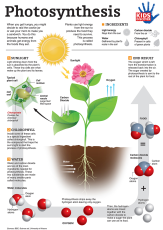…And they’re not tigers, sharks, vultures, or any other animal, for that matter. They’re plants!
“How can that be?” you’re probably wondering. According to your science book, plants make their own food through photosynthesis. They don’t eat meat or need food of any kind from the environment.
That’s true, of course. But it’s not the whole story.
Some plants grow in places where the soil doesn’t have all the nutrients they need. Unlike you, however, plants can’t just take a vitamin to make up the difference, and they can’t travel to better feeding grounds. To survive in nutrient-poor areas, plants have evolved over thousands of years to get the nutrients they need…from animals.
In all, over 630 species of flowering plants are carnivorous (flesh-eaters). They live mostly in bogs and rocky areas. And depending on the species, they devour everything from lizards and rats to insects and protozoa.
Don’t think you have to travel to exotic places to find carnivorous plants. They live all over the world—possibly at a location near you. In fact, more types of carnivorous plants live in North America than on any other continent.
Carnivorous plants use one of five trapping mechanisms:
- Pitfall traps that trap prey in a rolled leaf
- Flypaper traps that use a sticky substance to trap prey
- Snap traps that use fast leaf movements to capture prey
- Bladder traps that use an internal vacuum to suck in prey
- Lobster-pot traps that force prey to move toward the trap with inward-pointing hairs
Trapping mechanisms may be active or passive. Active traps are ones that actually move to capture prey. Plants with passive traps attract prey to their trap. Once the prey has ventured in, it’s stuck. In both active and passive traps, the plant’s digestive enzymes go to work as soon as the prey is captured, breaking it down into nutrients the plant can use.
Pitfall Traps
Pitfall traps, a passive mechanism derived from a rolled leaf, are typical of pitcher plants. The leaves of these plants fold into funnel-shaped tubes, which are filled with toxic juices. A hood grows over the funnel opening to keep rainwater from diluting the liquid. An opening under the hood is just big enough for flies and other insects to pass through. But why would they do it? The plant’s leaves produce a sugary nectar. Flies and other insects follow the nectar trail under the hood and into the funnel. Once inside, a slippery surface prevents them from climbing back out, and they fall to their doom.
Not all pitcher plants have a diet of tiny insects. In 2009, a new species was discovered in the Philippines. The leaves of this particular plant form a pitcher large enough to drown a bird or a rat.
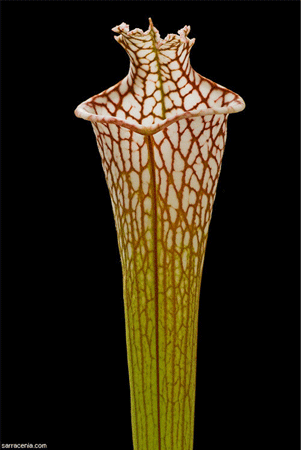
Flypaper Traps
Just as the name suggests, flypaper traps are passive mechanisms that consist of a sticky substance secreted from glands on the plant’s leaves. Insects that fly into the sticky hairs get stuck. Then, the plant begins its work. Slowly, the edges of the leaf where the insect is stuck roll up to encapsulate and digest the bug. The process may take several days.
Sundew plants produce long tentacles topped with a sweet, sticky substance. Once an insect gets stuck, more tentacles move in the direction of the insect to make a tighter trap.
Butterwort plants have glands on the topside of the leaf that produce droplets of sticky secretions. Some plants are carnivorous all year round, while others close up during the winter months only to open in summer with a new group of carnivorous leaves.
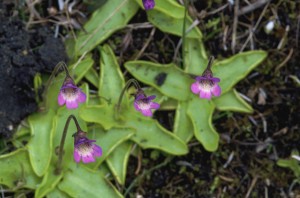
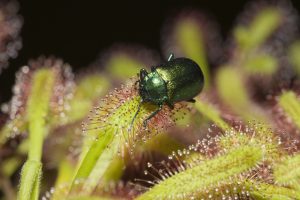
Snap Traps
Snap traps are active traps made up of leaves that snap shut, quite literally, in one-tenth of a second. The most well-known flesh-eater with a snap trap is the Venus flytrap. The heart-shaped leaves of the Venus flytrap consist of two lobes “hinged” in the middle. Tiny hairs that grow near the hinge act as triggers. If an insect walks across the hairs, touching two or more in sequence, the leaf will snap shut and trap the insect inside. Digestive juices secreted by glands on the surface of the leaf finish the job. If a leaf gets “fooled” and closes up without a victim, it will reopen after several hours.
Scientists believe the snapping action of the Venus flytrap is caused by a rapid loss of turgor pressure in the cells of the leaf. A single leaf can open and close about seven times before it loses its ability to do so.
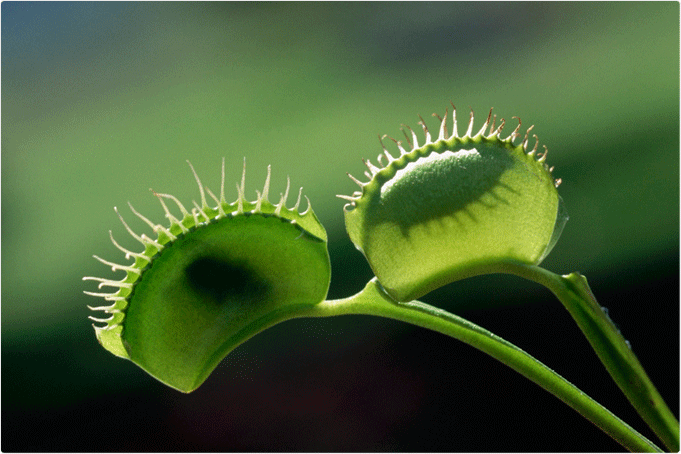
Bladder Traps
Bladder traps are exclusive to bladderwort plants. These unusual plants live on land and in water; some survive even in watery muck. The “hunt,” which is extremely complex by plant standards, takes place either underwater or underground in a water-soaked environment. It may remind you of a vacuum cleaner.
Using specially designed glands, the bladderwort sets the trap by pumping fluid out from its bladder, creating a kind of vacuum inside. Then the bladder’s trap door closes tight. When a small creature bumps into the door or touches a hair sticking out from the door, the trap opens, and, like a vacuum cleaner, the bladderwort sucks in its next meal. Whooooosh. Digestion may take a few hours or a few days, depending on the size of the prey.
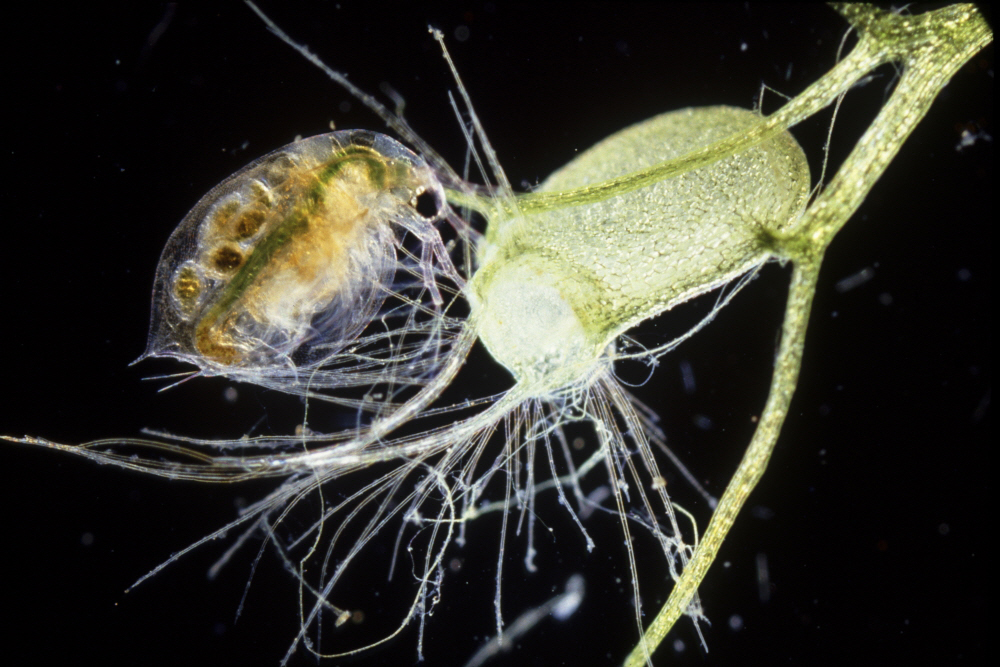
Lobster-pot Traps
Lobster-pot traps consist of a compartment that’s easy to enter but hard to leave. The plant’s leaves hang like an upside-down Y in water or wet soil. Attracted by chemicals, a potential meal, such as a protozoan, enters the long hollow tube of a leaf. Hairs that point inward keep the prey moving deeper and deeper into the trap to one of the branches of the Y, where juices await to digest it.
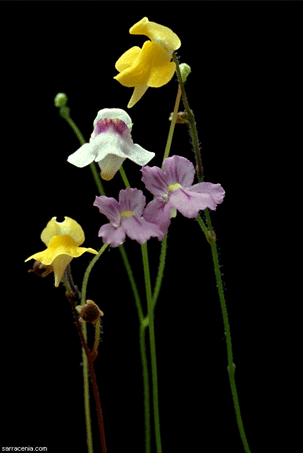
So that’s the story on carnivorous plants, or at least part of it. Are these crazy life-forms creepy or cool? You be the judge.
Written by Marjorie Frank.[wp-simple-survey-3]


